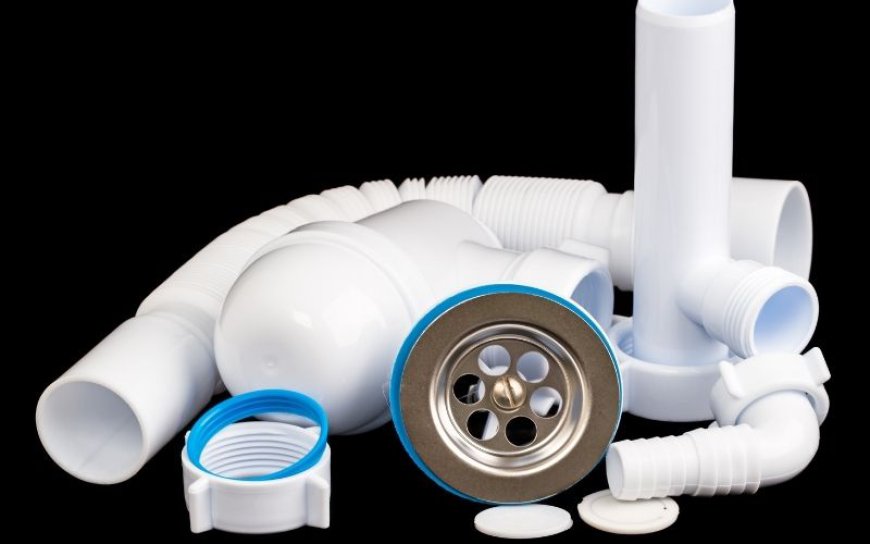Choosing the Right Fitting Size for Your Sink: A Quick Guide

When you’re fixing or installing a new sink, one of the biggest challenges can be figuring out the right fitting size for your plumbing connections. While it might sound straightforward, there’s actually a bit of measuring and understanding involved. This guide will walk you through everything you need to know to get the perfect size fitting for your sink.
Why Fitting Size Matters
Using the correct fitting size is essential to avoid leaks, poor water pressure, or even damage to your pipes. If the fitting doesn’t fit just right, water may not flow smoothly, or it may leak over time, causing potential water damage to your cabinet and flooring. Choosing the right size ensures a snug, leak-free connection and keeps your plumbing running efficiently.
Standard Sizes for Sink Fittings
Most sink fittings in residential plumbing come in standard sizes. Here’s a quick overview of some common sizes:
-
Supply Line Fittings: The standard sizes for supply line fittings (the pipes that bring water to your sink) are usually 3/8-inch or 1/2-inch. However, you’ll need to check both the supply valve and the faucet inlet to be sure. Some faucets may use a 1/2-inch fitting, while others may only need a 3/8-inch.
-
Drain Fittings: Sink drains in most kitchens typically use 1 1/2-inch or 1 1/4-inch fittings. Bathroom sink drains are often slightly smaller, with a 1 1/4-inch fitting being common.
-
Pipe Threads: Pipe threads, or the threaded parts of pipes and fittings, usually follow either NPT (National Pipe Thread) or compression standards. NPT is common in plumbing, but compression fittings are often found in water supply lines.
How to Measure Your Fittings
To determine the fitting size you need, you’ll need a few simple tools:
-
Tape Measure or Calipers: Use a tape measure or calipers to measure the diameter of the pipe you’re working with. Be sure to measure the outside diameter (for pipes) or the inside diameter (for fittings).
-
Thread Count: Count the threads per inch if you’re working with threaded fittings. This helps to confirm if you’re dealing with NPT threads, which have a specific standard for different pipe sizes.
-
Reference Plumbing Diagrams or Manuals: Some sinks or faucets come with a manual that specifies the fitting size. Check for any labels or measurements printed on the existing plumbing if you’re replacing a part.
If you’re still unsure, taking a picture or bringing the fitting to a hardware store can help a professional guide you to the correct part.
Common Sink Fitting Types and Sizes
Here are a few common types of fittings and what you should know about their sizes:
- Compression Fittings: These are often found on supply lines, and they’re usually either 3/8-inch or 1/2-inch in diameter.
- Slip-Joint Fittings: Found on drains, slip-joint fittings are typically 1 1/4-inch for bathroom sinks and 1 1/2-inch for kitchen sinks.
- Threaded Fittings: If you’re dealing with NPT-threaded fittings, they should match the diameter of your pipe, often measured in inches.
When to Call in the Professionals
If you’re having trouble figuring out the fitting size, or if the job seems too complex, don’t hesitate to reach out to a local expert. An experienced plumber can measure and match fittings correctly, ensuring you avoid leaks or pressure issues. For Commerce City, CO Plumbing Repairs, a licensed plumber can make quick work of sizing and installing the correct fitting so you can skip the guesswork and get a perfect fit.
DIY Tips for Sink Fittings
If you’re taking on a sink repair or installation yourself, here are some tips:
- Double-Check Your Measurements: Even a small error in measurement can lead to a loose or too-tight fitting.
- Use Teflon Tape on Threads: This will help create a leak-proof seal on threaded fittings.
- Test for Leaks: After installation, turn the water on slowly and check for leaks around the fittings.
Don’t Guess—Get the Right Size for a Leak-Free Sink
Choosing the right fitting size is crucial for a smooth and hassle-free sink installation or repair. If you’re in doubt, calling a Plumbing Company in Commerce City, CO can save you time, frustration, and potential water damage, More About Us. With a bit of preparation and the right help, you’ll have your sink up and running in no time!
